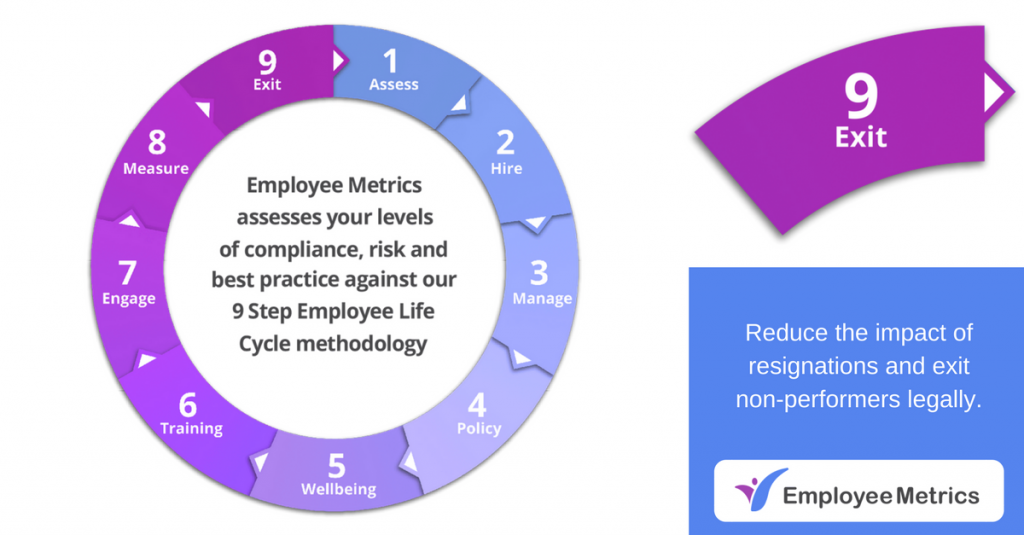
Exit: Step 9 of the Employee Life Cycle
If you are new to our Employee Life Cycle series, click here to go back and begin at Step 8 Measure, or read on for Step 9 Exit.
Exiting, an important yet neglected step in the employee life cycle
According to Aberdeen research, only 29% of organisations have a formal exiting process to transition employees out of an organisation.
Challenges and cost of employee exiting
Terminations without tears
If the termination process is not undertaken correctly, the organisation could potentially be exposed to a variety of claims, including unfair dismissal, discrimination, workers’ compensation claims for psychological injury, claims of bullying and/or harassment.
Right exiting processes, right outcomes
Interestingly, 70% of organisations focus solely on managing the exiting process of voluntary separations. Involuntary separations and retirees cannot be neglected, as they are still a security and compliance risk. Each type of exit needs its own standard process to meet the exiting requirements of the organisation and the entitlements of the employee.
Moderns systems for today’s workforce
Employee Metrics can help organisations ensure all facets and legal requirements of exiting procedures are streamlined into operational practices. Once the process is set up, organisations won’t have to worry about legal compliance issues again.
Step 9: Exit: Reduce the impact of resignations and exit non-performers legally
Employee Metrics diagnostic platform walks you through a detailed assessment, supported by an experienced HR Consultant. It generates a detailed report of your position across the 9 steps of the Employee Life Cycle.